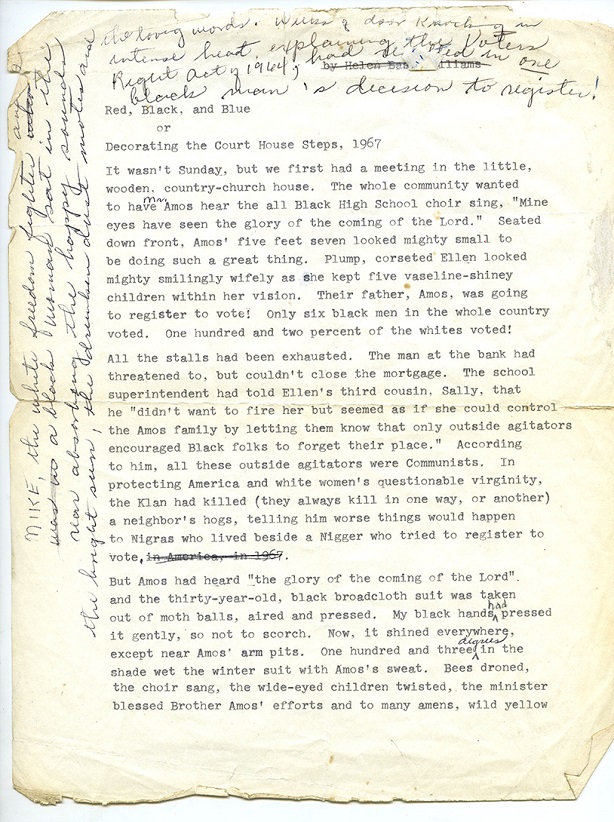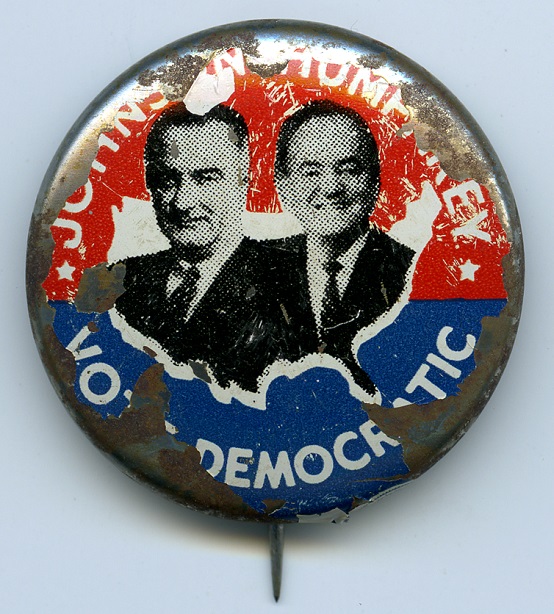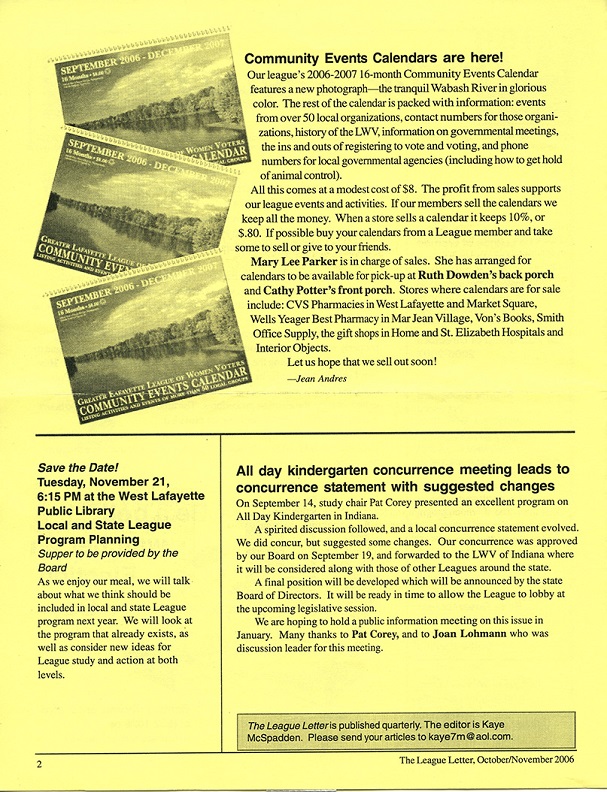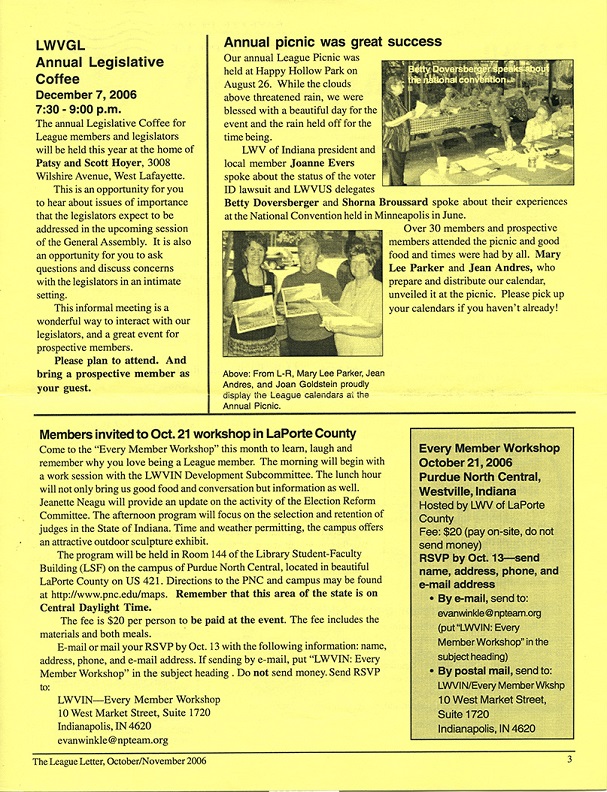
Votes for Women ≠ Votes for all Women
The 19th Amendment did not secure equal suffrage in the United States. To garner support
from Southern states, Alice Paul, leader of the National Woman’s Party and one of the key
suffragists credited in securing the passage of the 19th Amendment, emphasized that Southern
states could use the same tactics they already used to suppress Black men’s votes to similarly
suppress Black women. Black people were also not the only group denied the right to vote.
Indigenous people, those of Chinese, Japanese, and Indian descent, and other racial and
religious minorities were denied citizenship, preventing them from voting.
Though Black men and women were able to vote in Indiana and many of them did, they were
still threatened with day-to-day violence and discrimination from racist ideologies, growing
support of the Ku Klux Klan, and segregation policies held by many cities, schools, and
universities, including Purdue.
from Southern states, Alice Paul, leader of the National Woman’s Party and one of the key
suffragists credited in securing the passage of the 19th Amendment, emphasized that Southern
states could use the same tactics they already used to suppress Black men’s votes to similarly
suppress Black women. Black people were also not the only group denied the right to vote.
Indigenous people, those of Chinese, Japanese, and Indian descent, and other racial and
religious minorities were denied citizenship, preventing them from voting.
Though Black men and women were able to vote in Indiana and many of them did, they were
still threatened with day-to-day violence and discrimination from racist ideologies, growing
support of the Ku Klux Klan, and segregation policies held by many cities, schools, and
universities, including Purdue.

Votes for Women ≠ Votes for all Women

"A Colored Student Replies", November 29, 1949
Purdue Exponent Collection, volume 64, number 61
Description | Digital Image
Purdue Exponent Collection, volume 64, number 61
Description | Digital Image
A 1949 article written by Winifred White
about discrimination against Black students
at Purdue. Winifred White and her sister
Frieda Jefferson Parker were integral in
desegregating Purdue’s campus.
about discrimination against Black students
at Purdue. Winifred White and her sister
Frieda Jefferson Parker were integral in
desegregating Purdue’s campus.

Votes for Women ≠ Votes for all Women

"Mixed Neighborhoods?" pamphlet, 1970
League of Women Voters of Greater Lafayette records, MSP 55, Box 4, Folder 15
Description
League of Women Voters of Greater Lafayette records, MSP 55, Box 4, Folder 15
Description
A 1970 pamphlet dispelling negative stereotypes about non-white neighbors
and encouraging diverse neighborhoods in Greater Lafayette.
and encouraging diverse neighborhoods in Greater Lafayette.

Votes for Women ≠ Votes for all Women
Before coming to Purdue University as a professor, Helen Bass Williams was an educator
and civil rights activist in the South where she helped disenfranchised African Americans
register to vote.
During her time in South Carolina, Williams recruited Black students to voter registration
workshops and trainings, driving over 200 miles under the threat of dismissal or arrest if
caught. In Mississippi, she drove to various counties to help Black residents safely register
to vote and get to polling stations that were sometimes moved multiple times a day to
suppress Black voters.
and civil rights activist in the South where she helped disenfranchised African Americans
register to vote.
During her time in South Carolina, Williams recruited Black students to voter registration
workshops and trainings, driving over 200 miles under the threat of dismissal or arrest if
caught. In Mississippi, she drove to various counties to help Black residents safely register
to vote and get to polling stations that were sometimes moved multiple times a day to
suppress Black voters.

Votes for Women ≠ Votes for all Women

Framed photograph of Helen Bass Williams, undated
Helen Bass Williams papers, MSP 310, Box 8, Item 2
Description
Helen Bass Williams papers, MSP 310, Box 8, Item 2
Description

"Red, Black, and Blue" manuscript, 1967
Helen Bass Williams papers, MSP 310, Box 2, File 4
Description
Helen Bass Williams papers, MSP 310, Box 2, File 4
Description
A manuscript written by Helen Bass Williams titled, “Red, Black, and Blue,” that retells a story of Amos, a Black
man in Mississippi, who is shot and killed while trying to vote. Williams’ stories of her experiences during the
civil rights movement are often based on real-life experiences but tend to be fictionalized in some way. In this case,
Amos was indeed shot while trying to vote, but survived. There is also a recording of Williams retelling this story.
*WARNING: This story contains derogatory terminology and instances of violence*
man in Mississippi, who is shot and killed while trying to vote. Williams’ stories of her experiences during the
civil rights movement are often based on real-life experiences but tend to be fictionalized in some way. In this case,
Amos was indeed shot while trying to vote, but survived. There is also a recording of Williams retelling this story.
*WARNING: This story contains derogatory terminology and instances of violence*

Votes for Women ≠ Votes for all Women

Political button from the "March Against Fear" civil
rights protest, 1960s
Helen Bass Williams papers, MSP 310, Box 8, Item 5
Description
rights protest, 1960s
Helen Bass Williams papers, MSP 310, Box 8, Item 5
Description
This political button from Helen Bass Williams'
involvement in the civil rights movement is from
the “March Against Fear” demonstration to protest
racism in Mississippi and encourage African
Americans to vote.
involvement in the civil rights movement is from
the “March Against Fear” demonstration to protest
racism in Mississippi and encourage African
Americans to vote.

Political button for the Student Non-Violent
Coordinating Committee, 1960s
Helen Bass Williams papers, MSP 310, Box 8, Item 6
Description
Coordinating Committee, 1960s
Helen Bass Williams papers, MSP 310, Box 8, Item 6
Description
This political button from Helen Bass Williams'
involvement in the civil rights movement is for the
Student Non-Violent Coordinating Committee, a student-
led activist group that protested segregation and the
political exclusion of African Americans.
involvement in the civil rights movement is for the
Student Non-Violent Coordinating Committee, a student-
led activist group that protested segregation and the
political exclusion of African Americans.

Votes for Women ≠ Votes for all Women
After decades of work by civil rights activists, Lyndon B. Johnson signed the Voting
Rights Act into law in 1965. This act aimed to protect voter registration and voting rights
for racial minorities.
Even with this law, voting suppression tactics persist. Voter registration restrictions,
identification laws, limitations of early voting opportunities, and inadequate polling
stations continue to be employed across the United States, including in Indiana, and
predominantly affect minority communities.
Rights Act into law in 1965. This act aimed to protect voter registration and voting rights
for racial minorities.
Even with this law, voting suppression tactics persist. Voter registration restrictions,
identification laws, limitations of early voting opportunities, and inadequate polling
stations continue to be employed across the United States, including in Indiana, and
predominantly affect minority communities.

Votes for Women ≠ Votes for all Women

A campaign button supporting Lyndon B. Johnson
for president that belonged to Helen Bass Williams.
for president that belonged to Helen Bass Williams.

A bumper sticker supporting Lyndon B. Johnson for
president that belonged to Helen Bass Williams.
president that belonged to Helen Bass Williams.

Votes for Women ≠ Votes for all Women

The League Letter, October/November
2006
League of Women Voters of Greater
Lafayette records, MSP 55, Box 35,
Folder 6
Description
2006
League of Women Voters of Greater
Lafayette records, MSP 55, Box 35,
Folder 6
Description


The League Letter, March/April 2008
League of Women Voters of Greater Lafayette records, MSP 55, Box 35, Folder 5
Description
League of Women Voters of Greater Lafayette records, MSP 55, Box 35, Folder 5
Description
Newsletters by the League of Women Voters of Greater Lafayette highlighting their lecture series
on election issues including Indiana's restrictive voter ID laws and the importance of poll workers.
on election issues including Indiana's restrictive voter ID laws and the importance of poll workers.